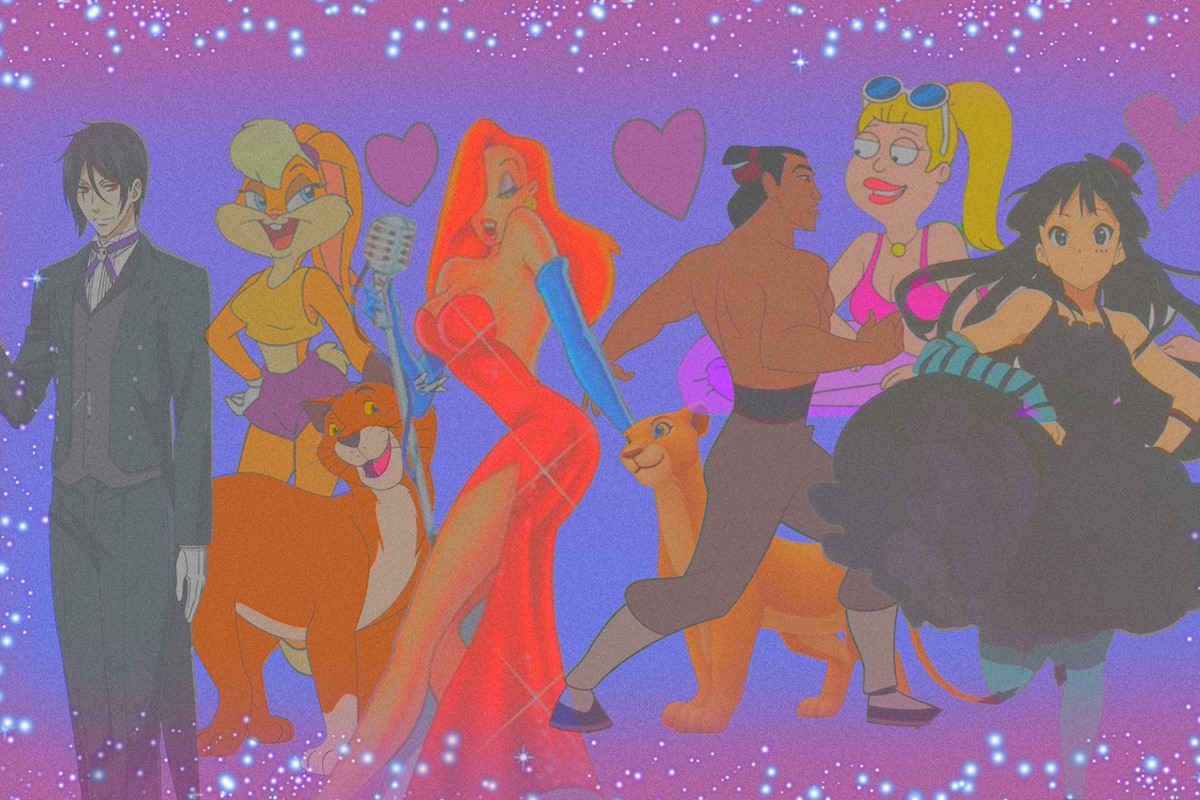‘I like them better than real girls and have not had any desire to move on to a ‘real’ relationship, even after many years of keeping this up’
Ever had a thing for the fox in Robin Hood? What about Li Shang from Mulan? Butterflies for Lola Bunny? Or Thomas O’Malley the alley cat? Did Simba and Nala inspire infatuation? For many of us, animated childhood crushes were a right of passage, a first experience with romantic feelings before graduating onto boyband members and substitute teachers. But for some, loving cartoon characters is a way of life – and even a sexual identity.
Toonophilia is the sexual attraction to cartoon characters, falling under the larger umbrella of fictosexuality. A 2019 demographic research paper by the Japanese Association for Sex Education reports that more than 10 per cent of Japanese youths (14-18) have an infatuation or love for fictional or cartoon characters. Not only that, but there’s a growing subculture of toonophiles that are actively practising romantic, even sexual relationships with their significant 2D others. Ficto-sexuals have a flag, a manifesto, and discuss their alternative sexuality in online forums.
Amy*, a 23-year-old artist from the UK, is deeply committed to her toonophile lifestyle and relationship with animated ‘husbando’ Sebastian Michaelis. Her tall, dark, handsome partner is from the anime series Black Butler, which she started watching as an escape from living in a “shitty London” neighbourhood. “I started watching Black Butler and full-on drooled over Sebastian,” she says. “He made me laugh and feel tingles. Then I started drawing him all the time. I shared pictures with my friends and made jokes about a sexual relationship with him. Then, without really thinking about it, he became far more than that. It was a pure thing. Like, it just happened naturally.”
Amy has been in an exclusive bond with Sebastian for four years and keeps physical representations of him up around her house, including figurines, posters and a keychain. “I have a Sebastian altar by my computer,” she says. “I also sleep with a plushy on my pillow. [Just] little check-ins to remind me he’s with me every day.” When it comes to intimacy, Amy says she just closes her eyes and feels him all over her body. “That helps when I want to… you know. I’ve [also] thought about getting a tattoo. I think he’d like that… but I’m scared of needles. I write a note to him every day in a diary by my bed – kinky letters too.”
Justin*, 19 from the US, is a self-proclaimed NEET (Not in Education, Employment or Training). He’s married to multiple characters from the anime series K-On!. His first cartoon infatuation was with the show’s fictional musician, Mio Akiyama. After an early human break-up that left a bad taste in his mouth, he became devoted to his ‘waifu’ relationships, which he says have actively improved his quality of life. “I refer to each of them as a wife. Any other girl I like from another series, I’d refer to as my girlfriend. The girlfriend list includes quite a few,” he says. “I don’t see it as polyamorous because that would imply that everyone in the group loves each other, which I don’t feel comfortable with. The best way I can describe my situation is that I think of it like a harem anime, where the MC [main character] has multiple girls.”
Justin says he has a lively relationship with each girl. Years of practice and knowing their personas allow for deep conversations, and he’s worked hard to keep them alive through roleplay and imagination. They go on dates to the cinema and to bookshops. Once, for example, he took Mio to a music store for her birthday to indulge her interest in musical instruments. He then took her back to his place for a romantic meal. Onlookers are often puzzled to see an empty seat when he orders for two at a restaurant.
“I’m happy, and I’m sure the girls I love are happy too,” he says. “I like them better than real girls and have not had any desire to move on to a ‘real’ relationship, even after many years of keeping this up. I hope it stays that way. If there are any cons, it’s probably just that others don’t understand my situation or frown upon it, which I’m OK with.” Justin dreams of a day when he can make his relationships official, as he’s frustrated by the laws in his state that won’t officiate human-cartoon marriages. But by working on lucid dreaming techniques, he hopes to further bridge the divide between their shared realities. “If I smell a particularly nice smell IRL, I may pretend that it’s one of them standing next to me.”
At present, Toonophilla is not officially classified as a paraphilia in The Diagnostic and Statistical Manual of Mental Disorders (DSM-5). The American Psychiatric Association has yet to decide what fictional relationships mean for our societal well-being. However, it’s evident that these relationships serve a purpose within our increasingly complex and uncertain world. They soothe, comfort and offer respite to many people across a wide range of cultures. It’s old news by now that Gen Z is having less sex than any other generation, and reports about rising loneliness and social isolation might tempt some to see fictosexual relationships as a response to this and a negative reflection on our ability to form relationships. However, it might not be that simple – or bleak.
Patrick Galbraith is an associate professor in the School of Communication at Senshu University, Tokyo. Galbraith is an expert in Otaku culture and the developing trend of fictosexual relationships in Japan. He believes these relationships are not compensatory and denies their emergence as a simple crutch. “People are not necessarily turning away from anything to fulfil their needs. Many people I have encountered in the field have come to use adult comics, cartoons and games for release, but they also have sex and significant others in the ‘real world,’” he says.
Professor Galbraith’s research has led to further investigation of fictosexuals and toonophiles with very specific 2D kinks. One memorable example he cites is a man who described himself as attracted to the drawn line itself. “That is, this man said he had a ‘line fetish.’ Others talk about ‘eroticism of the line’ and ‘drawing desire,’” he explains. “We really ought to think beyond our ingrained assumptions about sex and relations, which tend to fixate on ‘the human.’ Anything else is treated as less-than, compensatory, or an aberration that requires explanation.”
Asked if he saw cartoon and fictional relationships becoming more commonplace in our increasingly media-saturated environments, Professor Galbraith said yes. “I do see relationships with fictional characters gaining more recognition in coming years as more and more people learn about them and become less afraid to share the love,” he says. So if you’ve been keeping your hot and heavy Gaston crush secret all these years, maybe now’s the time to open up and explore.
*Names have been changed to protect the identity of interviewees
Join Dazed Club and be part of our world! You get exclusive access to events, parties, festivals and our editors, as well as a free subscription to Dazed for a year. Join for £5/month today.






No Comments
Sorry, the comment form is closed at this time.